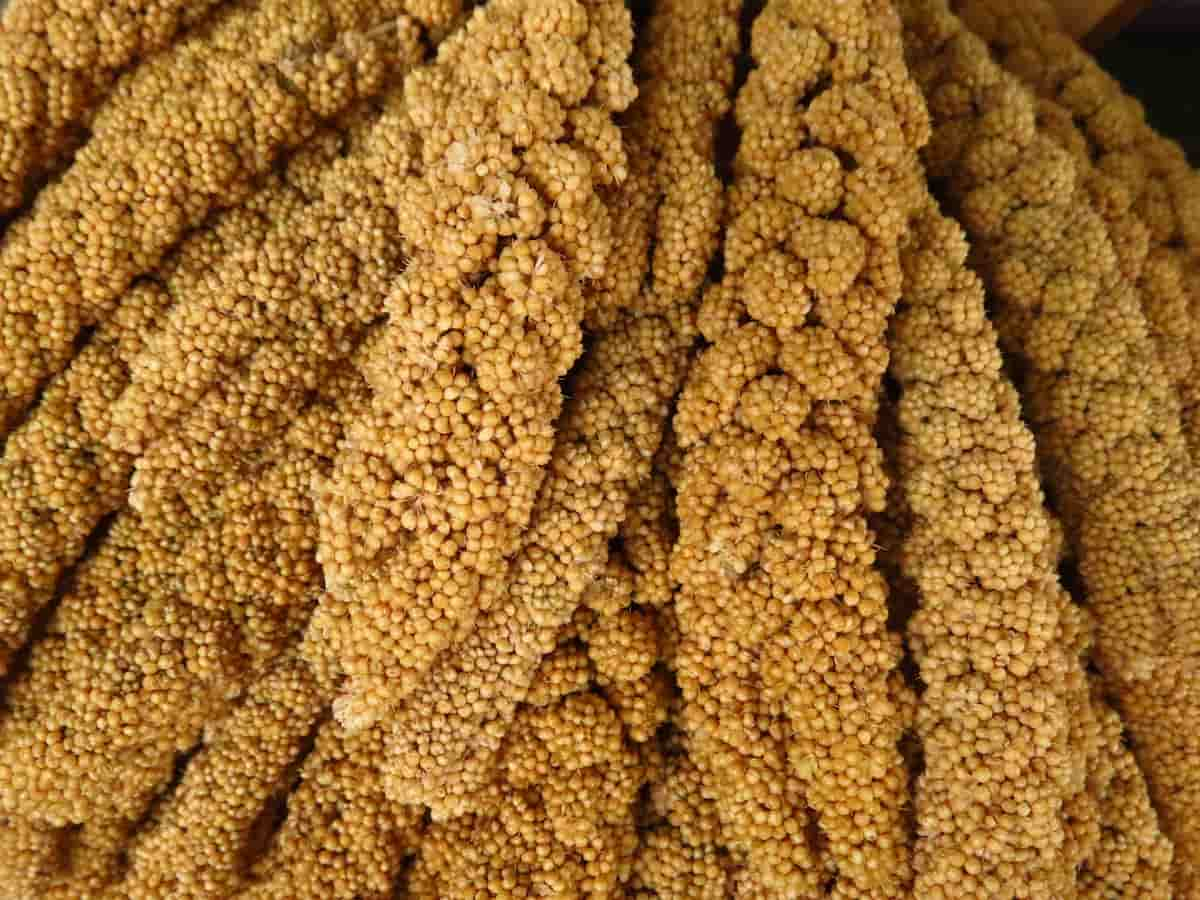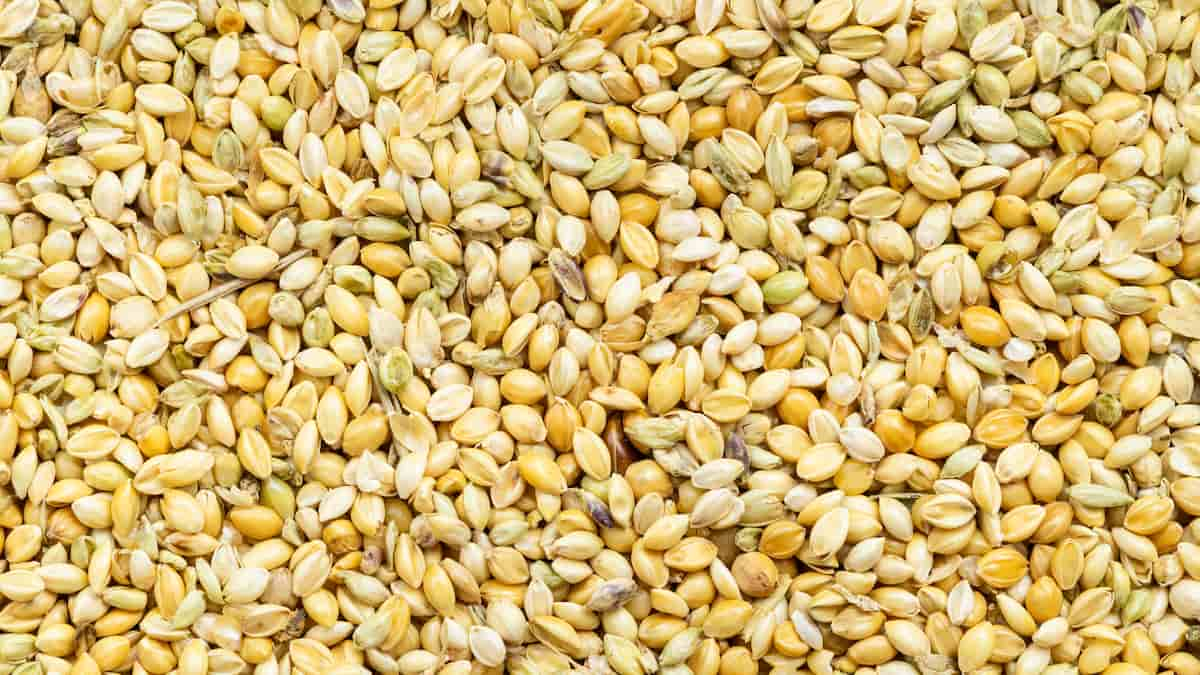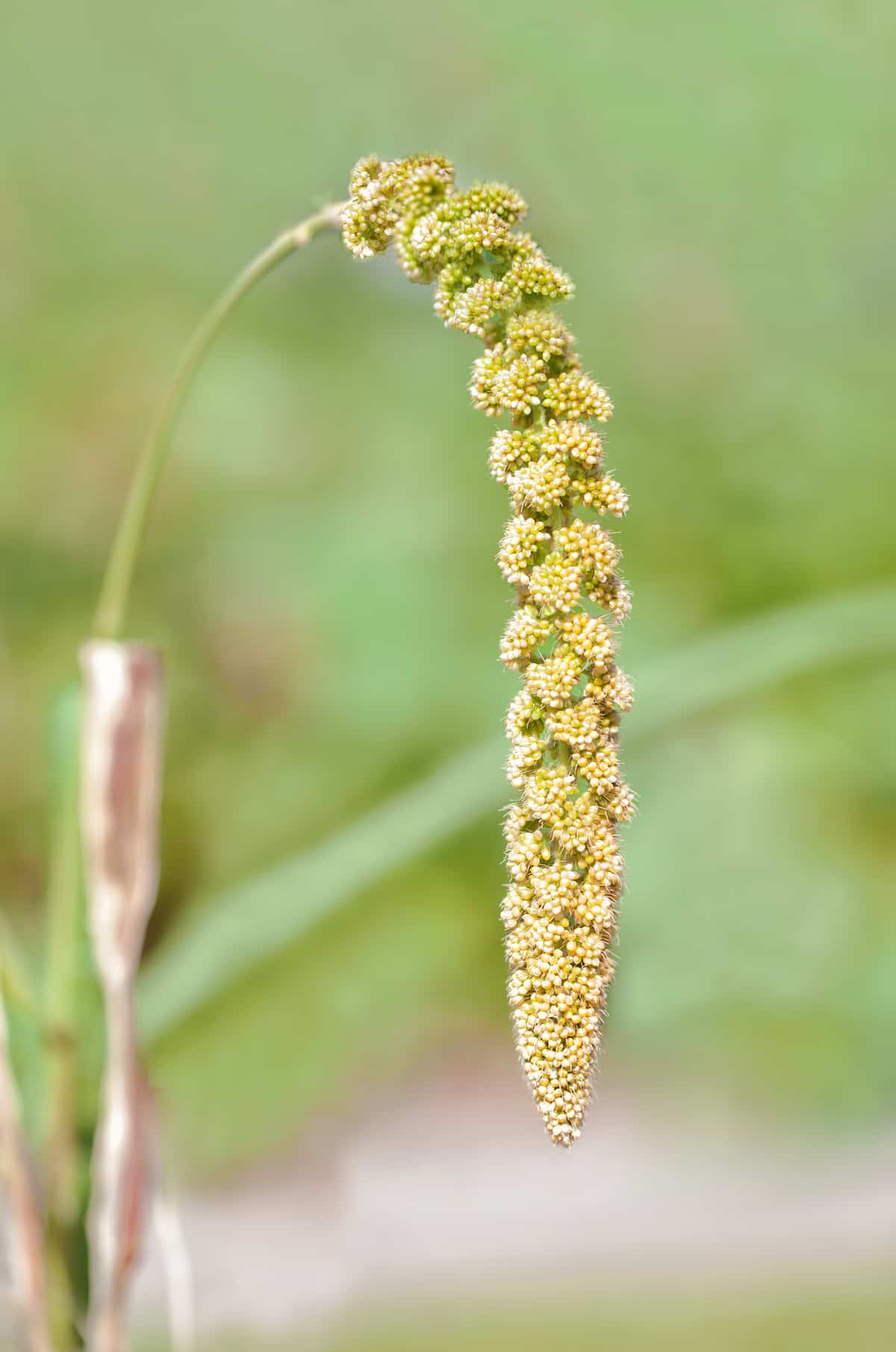Foxtail millet, also known as Setaria italica, is a cereal crop grown during the warm season and a member of the Poaceae family. It has different names, including Italian millet, German millet, and plain foxtail. The plant was first domesticated in China but is now cultivated across much of Asia and has been doing so for thousands of years.

The high nutritional value and resistance to dehydration and other environmental stresses that foxtail millet possesses make it a valuable crop. Foxtail millet also has a high water retention capacity. It is a multipurpose product that humans can consume, feed animals, and convert into biofuel simultaneously. The cultivation of foxtail millet begins with the preparation of the ground and ends with the harvesting of the crop.
Foxtail Millets Production Guide
Best Package and Practices of Foxtail Millet High Production
To ensure high production of Foxtail millets, farmers should adopt best practices such as selecting high-yielding varieties, using quality seeds, maintaining soil fertility, managing pests and diseases, timely sowing, appropriate weed control, adequate irrigation management, and timely harvesting. Additionally, new technologies and agronomic strategies can further enhance yields. By following these practices, farmers can maximize their Foxtail millet yields.
Land/ Field Preparation and Soil Requirements for Foxtail Millet
Foxtail millet is a drought-resistant grain crop that grows well in various soil types, but it is most successful when grown in soils that are well-drained, loamy, and have a pH range of 6.5-7.5. It can also survive in slightly alkaline or salty soils, but its performance may be reduced. The soil has to be plowed about to a depth of between 4 and 6 inches and would have to be leveled out generally.
Temperature, Climatic, and Rainfall Requirements for Foxtail Millet
Foxtail millet grows best at temperatures between 25 and 30 degrees Celsius, but the crop can survive in temperatures as high as 40 degrees Celsius. The crop requires at least 400 and 500 (mm) of rainfall but can withstand between 1000 and 1200 (mm). It does best when planted in soils that are relatively light in texture, have good drainage,
Propagation Method and Seed Quality for Foxtail Millet
Foxtail millet is Raised by seed. High yield and strong crop establishment depend on excellent seed quality. Farmers should use tested seed that is clear of contaminants and diseases. Before planting, seeds should be treated with fungicides and insecticides to prevent diseases and bug infestations. Proper storage conditions like cool, dry environments should be kept to protect seed quality.
Seed Treatment for Foxtail Millet
Seed treatment is crucial to prevent diseases and protect young roots from fungi. Organic treatments such as Beejamrut or chemical treatments like Carbendazim@2g/kg can be used to achieve this.
Seed Rate and Spacing for Foxtail Millet
The seed rate for Foxtail millet farming depends on the variety and cultivation method. Typically, 8 to 10 kg/ha of seed is required for sowing, while 15 kg/ha is needed for broadcasting. The optimal time for sowing is during the monsoon season. The spacing between plants should be maintained at 15-20 cm, while row spacing should be kept at 25-30 cm.
Sowing Method for Foxtail Millet
Broadcasting and line sowing are two methods of sowing. Row-to-row spacing is 25-30 cm, plant-to-plant spacing is 8-10 cm, and depth is 2-3 cm.
In case you missed it: How to Grow Millets Organically: A Step-By-Step Production Guide

Crop Rotation and Intercropping in Foxtail Millet
Foxtail millet intercropping can be done with groundnut in a 2:1 ratio or cotton in a 5:1 ratio in the Rayalseema region of Andhra Pradesh. Additionally, finger millet can be intercropped with pigeon peas in a 5:1 row ratio. Crop rotation is another important practice that helps maintain soil fertility and improve yields. Farmers can rotate Foxtail millet with legume crops such as green gram, soybean, horse gram, black gram, field gram, or peanut to ensure optimal soil health and crop productivity.
Manure & Fertilizer Applications in Foxtail Millet
The fertilizer application in Foxtail millet farming, accordingly. Compost or farmyard manure should be applied at a rate of 5-10 tonnes per hectare about a month before sowing seeds. Foxtail millets require fewer inputs than wheat and rice. For a good yield, 40 kg nitrogen, 20 kg P2O5, and 20 kg K2O per hectare are recommended. Apply the entire P2O5 and K2O and half of the nitrogen as a basal dose, and the remaining half of nitrogen should be applied 30 days after sowing.
Weed Management and Herbicide Application in Foxtail Millet
The primary challenge with millet farming is weeds. It is recommended to line-sow a crop and perform two inter-cultivations and one manual weeding. A tyne-harrow intercultural procedure is suggested when the crop is 30 days old. Cycle weeder can also be used, and it is simple to operate and saves time and energy.
Water Management in Foxtail Millet
Kharif season Foxtail Millet is primarily rainfed, but 1-2 irrigations can be applied in case of extended dry spells. 2-5 irrigations may be required for summer crops depending on soil type and weather conditions.
Disease Control in Foxtail Millet
Blast, smut, rust, and downy mildew are the diseases that affect Foxtail millet. Farmers can use various management techniques to contain these diseases, including crop rotation, disease-resistant varieties, and the timely application of fungicides. Chemicals such as Carbendazim, Mancozeb, and Propiconazole are frequently used for controlling these diseases. Carbendazim or Propiconazole can be used for blast disease, whereas Mancozeb or Carbendazim are suggested for smut. Downy mildew can be handled with Carbendazim or Mancozeb, and rust can be managed with Propiconazole or Mancozeb.
Pest Control in Foxtail Millet
Foxtail millet gets attacked by the stem borer, gearhead insect, and shoot fly. Foxtail millet can be controlled for pests using cultural procedures like timely sowing and appropriate field hygiene. Chemical control can be accomplished using insecticides such as Thiamethoxam, Imidacloprid, and Fipronil.
Harvesting and Threshing of Foxtail Millet
Foxtail millet is typically harvested 80-90 days after sowing when the earheads are dry. Harvesting can be done using a sickle to cut the whole plant or the earheads. In the Kharif season, it’s done in September-October, while in Rabi, it’s done in February-March.
In case you missed it: Pearl Millet Production Guide: A Step-By-Step Cultivation Practices

Foxtail Millet Yield per Acre
Foxtail millets usually yield between 10 and 12 quintals per acre. Across all types, the average price per quintal is 3300.00 INR.
Conclusion
Selecting high-yielding varieties, using quality seeds, maintaining proper soil fertility, and managing pests and diseases is critical for successful foxtail millet cultivation. Along with these practices, appropriate irrigation management, timely harvesting, and crop rotation can all contribute to high yields and profitable foxtail millet farming.
- Ultimate Guide to Ossabaw Island Hog: Breeding, Raising, Diet, and Care
- Ultimate Guide to Juliana Pig: Raising Facts, Size, Diet, Care, and Lifespan
- Raising Lleyn Sheep: Disadvantages, Price, Uses, Characteristics, and Care
- Ultimate Guide to Meishan Pig: Breed Facts, Breeding, Raising, and Care
- Ultimate Guide to Teacup Pigs: Raising, Diet, Lifespan, Cost, and Care
- Guide to Raising Poll Dorset Sheep: Facts, Profile, Characteristics, Uses, and Care
- Ultimate Guide to Bighorn Sheep: Characteristics, Diet, Lifespan, Breeding, and Lifecycle
- Ultimate Guide to Raising Katahdin Sheep: Farming Facts, Breed Profile, Uses, and Care
- Ultimate Guide to Raising Oreo Cows: Belted Galloways Farming Facts, Profile, Uses, and Care